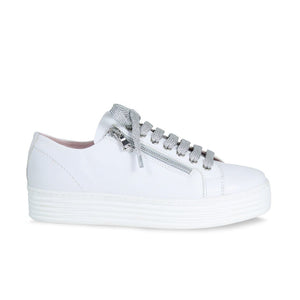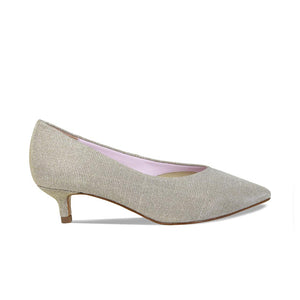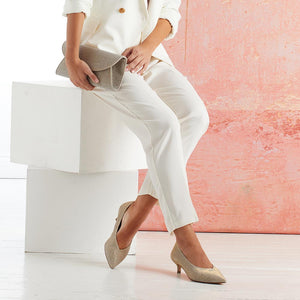Have you ever wondered if you have bunions? With more than 14 million people in the UK living with the condition, you wouldn’t be alone. But what if we told you that not every lump on the side of your big toe is a bunion?
Allow us to introduce you to bone spurs, which can resemble bunions but are actually quite different. Both conditions can cause pain and discomfort, and both can make finding the right shoes a challenge. However, bunions and bone spurs are not the same thing. Read on to discover what are the differences between bunions and bone spurs — you might find that your "bunion" isn't a bunion at all!

What is a Bunion?
Known in the medical world as hallux valgus, bunions are a common foot deformity caused when the base of the big toe joint shifts sideways. This bone growth on the toe pushes the bones of the big toe towards the smaller toes, creating a bony bump that can often be painful.
Bunions are a progressive condition and can vary in size. Unfortunately, they can simply be caused by genetics, but poorly fitting shoes that place stress on the feet, such as tight-fitting high heels, can also lead to bunion formation.
Additionally, some people develop bunions due to pre-existing conditions like osteoarthritis or rheumatoid arthritis. Regardless of how they form, most bunions present similar symptoms, including pain, stiffness and swelling in and around the toe joint and sometimes difficulty walking.
To manage bunions, a combination of self-care measures, lifestyle changes, and medical treatments typically works best. Wearing well-fitting, comfortable shoes with ample room for the toes is essential to reduce pressure on the bunion and alleviate pain.
Padding or orthotic devices, such as custom-made insoles, can help redistribute pressure away from the affected area, while applying ice to the bunion and taking pain relief medications, like paracetamol or ibuprofen, may also provide temporary relief from discomfort.
Exercises and stretches designed to maintain joint mobility and strengthen foot muscles can also be beneficial. However, if these treatments do not help, or if the bunion is severe, we would recommend consulting with a healthcare professional to determine the most appropriate treatment plan and whether surgery may be an option.

What is a Bone Spur?
Now you may want to know what are the difference between bunions and bone spurs. Bone spurs, or "osteophytes," may also appear to be bone growths on the toe but they are bony lumps that develop on the bones around the joints, including your big toe joint.
There are several reasons why bone spurs form, the most common being osteoarthritis, which occurs due to the breakdown of cartilage that cushions the ends of the bones. The bone spur you see is simply the body trying to repair the damage that has been created by making extra bone near the affected area.
Other reasons for bone spur formation include ageing (as we age, our discs wear down, and ligaments loosen, causing the body to thicken the ligaments to keep bones together), injuries from sports or accidents, poor posture, genetics, and even a poor diet.
Like bunions, bone spurs on the top or your foot or side of your foot can cause pain and discomfort, as well as stiffness and numbness. Because the condition is linked to arthritis, common treatments include taking painkillers such as paracetamol or ibuprofen, physiotherapy, surgery, and weight loss measures to reduce strain on the joints.

Lydia: Navy Suede - Flats for Bunions or Bunion Spurs
SHOP NOW
Bunion or Bone Spurs?
When it comes to understanding the differences between bunions and bone spurs, there are a few key things to keep in mind.
Firstly, bunions are actually a deformity that forms at the base of your big toe. They happen when the toe joint shifts sideways, creating that tell-tale bump. Bone spurs, on the other hand, are bony growths that can pop up on any bone. They often develop due to wear and tear from things like osteoarthritis or just the natural ageing process. You may find bone spurs on the side of your foot or bone spurs on the top of your foot.
Both bunions and bone spurs can show up as lumps and might be accompanied by redness and swelling, but there are some differences in how they feel and what they do.
Bunions are more likely to cause pain and discomfort right at the spot where the deformity is, especially if you’re wearing tight or poorly fitting shoes. They can also make walking tough and reduce the flexibility of your big toe. Bone spurs, meanwhile, might not always cause symptoms, but when they do, they can lead to pain, stiffness, and even numbness if they press on nearby nerves or tissues. Bone spurs on the side of your foot or bone spurs on the top of your foot can be painful too.
When it comes to treatment, the approach differs too. Managing bunions often involves wearing specially designed shoes or orthotic devices to ease the pressure on the toe joint. Discover our best shoes for bunions here! Exercises to keep the joint mobile can help, and in severe cases, surgery might be needed to correct the alignment of the toe.
For bone spurs, the focus is usually on reducing pain and inflammation with medications, physiotherapy, and lifestyle changes like weight management to take the strain off the joints. If a bone spur is causing significant pain or affecting your ability to function, surgery to remove it might be an option.

Mercy: Black Suede - Heels for Bunions or Bone Spurs
SHOP NOW
How to Diagnose whether you have a Bunion or Bone Spur?
If you're wondering whether you have a bunion or a bone spur, it’s a good idea to see your local healthcare provider as soon as possible for an assessment. Catching these issues early is key to stopping them from getting worse and managing any discomfort you might be feeling.
A doctor can often spot a bunion just by looking at your foot, and they might send you for an X-ray to get a clear picture of any bone misalignment. For bone spurs, the process is similar—they'll check for any tenderness or restricted movement and might recommend an X-ray or even an MRI or CT scan to see what's happening with the soft tissues and nerves around the spur.
You might also want to consider visiting a podiatrist. These foot and ankle specialists are great at pinpointing whether you’re dealing with a bunion or a bone spur. They can offer more targeted treatments, especially if your usual pain relief methods haven’t been working. Podiatrists are also fantastic at giving advice on how to prevent things from getting worse, which is super important if you have conditions like diabetes or arthritis that could complicate foot issues.
Don’t forget about self-care! Simple steps like wearing comfy, well-fitting shoes, using over-the-counter pain relief, and applying ice to the painful area can make a big difference. And remember, it’s possible to have both bunions and bone spurs, especially if there are other issues like arthritis at play. A thorough check-up will help uncover all the factors involved so you can get a treatment plan that’s right for you.

Terri: Ivory Leather - Loafers for Bunions or Bone Spurs
SHOP NOW
Summary
To recap, the main difference between bunions and bone spurs is that bunions are a deformity at the base of the big toe caused by the joint shifting sideways, while bone spurs are bony growths that can develop on any bone due to wear and tear or conditions like osteoarthritis. However, whether you’re dealing with bunions, bone spurs, or simply want to keep your feet happy and healthy, choosing the right shoes can make a big difference. This is where Sole Bliss comes in.
Blending style with serious comfort, our collection of wide-fitting shoes with award-winning technology is the go-to choice for those living with a range of foot conditions. Our shoes feature wide toe boxes, cushioned insoles, and stretchable materials that gently accommodate even the most painful bunions and bone spurs. No matter what your diagnosis, it’s important to reduce pressure on sensitive areas and provide the support you need. Choosing the right footwear can help you step out with confidence, free from worry.
To shop the full collection, please visit: solebliss.com/collections/all

Feather: Pale Grey Suede - Bunions or Bone Spurs
SHOP NOW


 USA
USA















